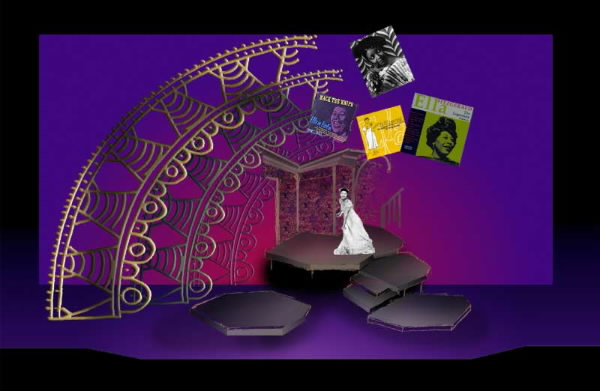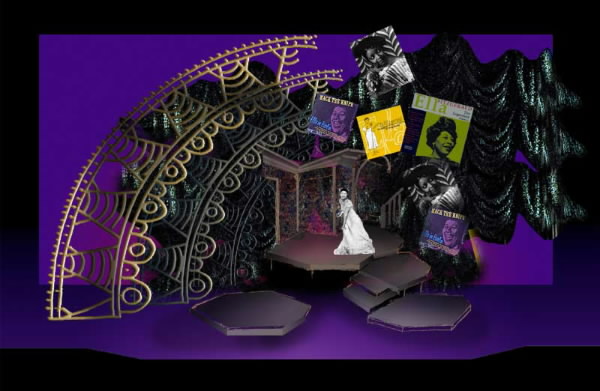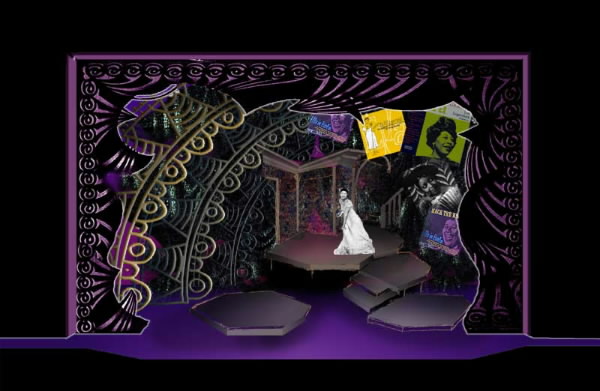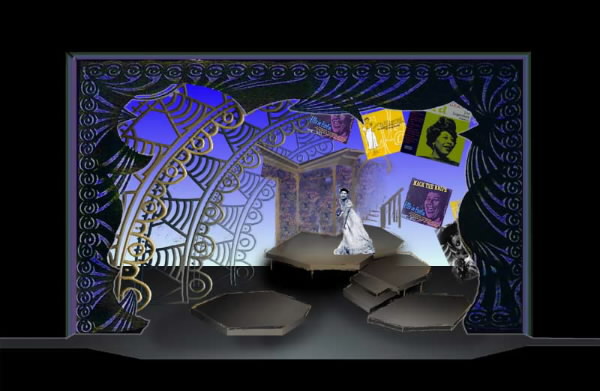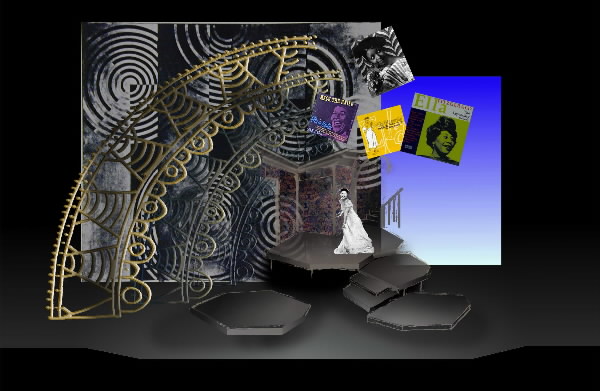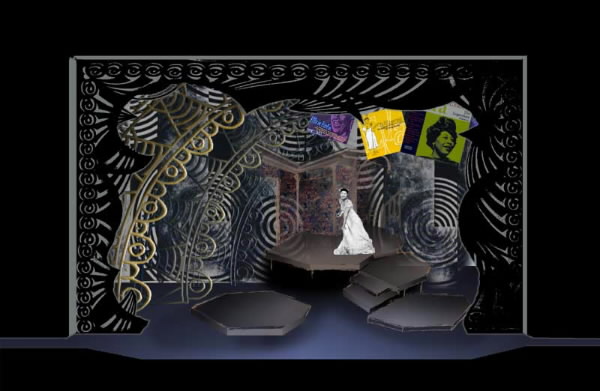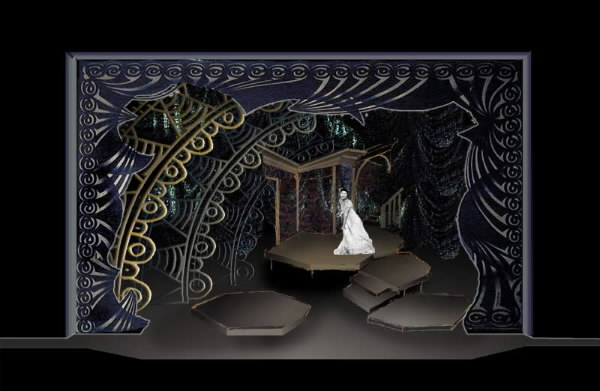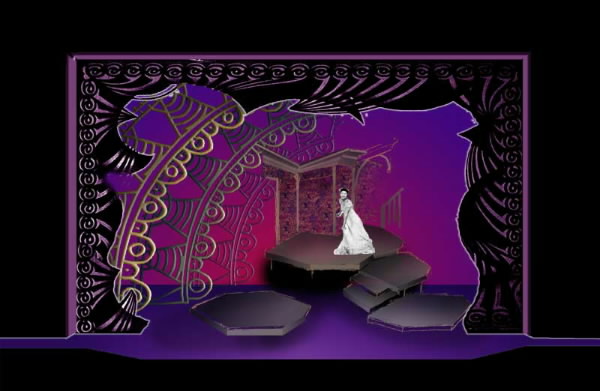Ladies of Song: -
Preliminary Set Designs Ideas
The illustrations presented here were preliminary so as to encourage discussion.
The elements were designed to be
"light reactive" in that they can change radically depending on the
lighting. These sketches to some extent also simulate how the look of the
stage can change with lighting.
Conceptual Foundations: The set presents
the required areas but within a dramaturgical context. The father's living
room is an island within a jazz-aged performance venue. The house itself has
elements of the old, the Victorian, with faded floral wallpaper, cornices, and
the like. Surrounding it on the outside and stage right, are a series of
portals. The jazz age has it's visual equivalent within the deco style and
these portals are derived from that style. The three arched portal elements
are not complete but in one scheme they segue into elements of album art and
portraiture from the three singers profiled. This seems to form a spiral
through time. The period venue portals beget the more modern element of
recordings, which lead inside to the location where the recordings are played,
at the father's house, with it's traditional ties to earlier eras.
Not shown yet in the illustrations is a
tri-fold mirror unit on the intermediary platform, one step down from the
father's living room platform. These mirror units are full-[human] sized.
These would allow the reflection of Lynnie to transform into the image of each
of the singers in turn. In the end, all 4 singers would in essence be
performing on stage!
Stylistic note: My set designs are
always very 3-D...sculptural. In 2-D form, they always appear to look
"busier" than they do on a real stage. This is especially true in my
light reactive settings. When light is removed the elements fade into the
background. I am confident that a single performer will NOT be lost within the
elements, but the elements would nicely frame her in. The effect of this set
in fact is not unlike the one I used in the NYSTI's 1982 production of
All-Time Good-Time Knickerbocker Follies (but without the financial and labor
pain. Here we get the effect but without the bucks!)
